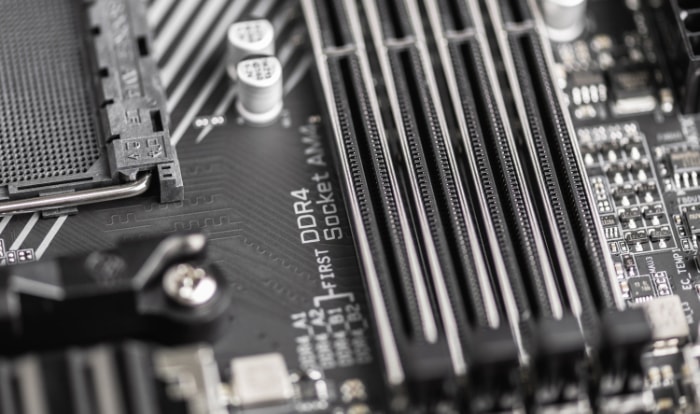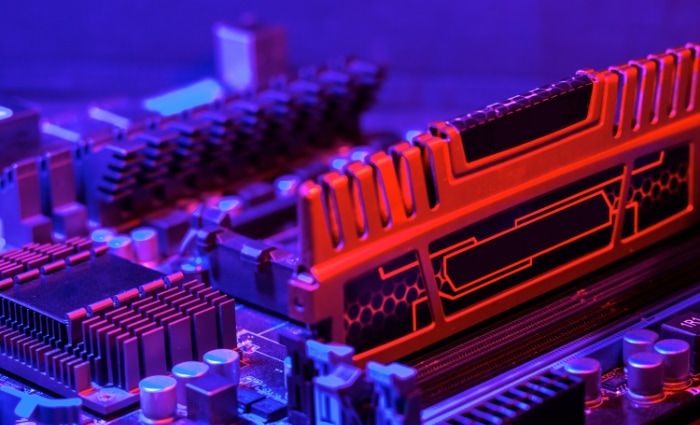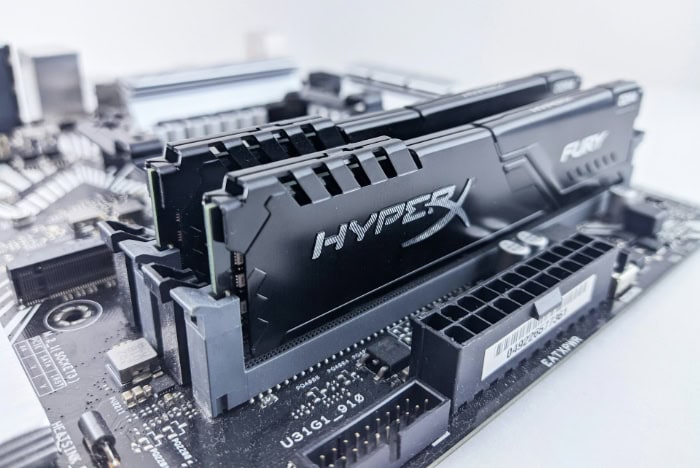What Is XMP and Should I Enable It?

Ever wonder why your high-performance RAM isn’t actually performing at its best straight out of the box? That’s because most memory modules default to conservative settings for compatibility, leaving their real potential untapped. Enter Extreme Memory Profiles (XMP), a game-changing feature that allows you to instantly unleash the speed and efficiency your RAM was designed for.
Core Definition and Purpose of XMP
Extreme Memory Profiles (XMP) is a feature developed by Intel to simplify the process of memory overclocking for PC users. Overclocking typically involves adjusting memory settings like clock speeds, timing, and voltage to boost performance, but this can be a complex and time-consuming process, particularly for those unfamiliar with intricate BIOS configurations.
XMP addresses this challenge by offering a straightforward solution: pre-configured profiles embedded within compatible RAM, allowing users to enable optimal performance settings with minimal effort. Essentially, XMP makes achieving high memory speeds and low latency far more accessible.
The primary purpose of XMP is to allow your RAM to operate at speeds higher than the standard JEDEC (Joint Electron Device Engineering Council) specifications, which are designed for maximum compatibility across a wide range of systems. While JEDEC settings prioritize stability, they often fall short of the full performance potential of modern memory modules.
XMP effectively bridges this gap by unlocking RAM’s advertised speeds, enabling users to take full advantage of their hardware capabilities. This is especially beneficial for users who are looking to boost system performance without having to navigate manual overclocking procedures.
Gamers, professional content creators, and PC builders are some of the key audiences who can benefit most from XMP. The technology is particularly valuable for gamers who require faster memory to improve frame rates and minimize stutter in graphics-intensive titles.
Similarly, professionals working with demanding applications, such as video editing, 3D rendering, or large-scale data analysis, can use XMP to enhance workflow efficiency by reducing processing bottlenecks. For PC enthusiasts and builders, XMP provides an easy way to optimize performance without diving into advanced system tweaking, making it a valuable tool for enhancing the overall computing experience.
Why XMP Matters for Modern Systems
Modern computers rely on a fine balance between the CPU, GPU, and memory to deliver optimal performance. While components like processors and graphics cards often grab the spotlight, RAM plays a crucial role as the system’s high-speed storage, facilitating communication between the processor and other components.
However, the default JEDEC settings for RAM are designed to ensure broad hardware compatibility rather than peak performance. This can result in unused potential, especially with high-performance modules engineered for speed.
XMP helps address this by offering a streamlined mechanism to unlock RAM's full capabilities. By configuring factors like clock frequency and latency through automated profiles, the technology ensures that users can achieve better performance without compromising system stability, as long as the hardware is compatible.
The feature’s simplicity and effectiveness in boosting memory performance explain its widespread adoption among PC enthusiasts, gamers, and professionals alike.
Technical Mechanics of XMP

Extreme Memory Profiles (XMP) streamline the process of memory overclocking by relying on predefined settings stored within the RAM module itself. Rather than requiring users to manually adjust a variety of complex parameters like frequency, voltage, or timings, XMP automates these steps, allowing the memory to operate at higher speeds and improved efficiency.
This is made possible through a combination of hardware-level programming and sophisticated firmware integration, enabling even novice users to achieve enhanced performance with minimal configuration.
The technology gets its functionality from the way memory modules are designed. RAM sticks come equipped with a small chip that contains important configuration data, and this is where XMP’s power lies.
By storing performance-optimized profiles within this chip, manufacturers can ensure that the memory operates at its best with just a few settings changes in the system’s BIOS or UEFI.
SPD and Profile Storage
XMP profiles are stored on the RAM module itself, specifically within a chip called the Serial Presence Detect (SPD). The SPD chip serves as a repository for memory configuration data, providing two primary sets of information: JEDEC default values and XMP profiles.
JEDEC is the industry standard governing default memory settings, prioritizing stability and compatibility across a wide range of systems. These settings are what your RAM will use by default, ensuring the system boots reliably even if the hardware or BIOS lacks XMP support.
Alongside JEDEC defaults, the SPD chip contains XMP profiles that are custom-tailored by the RAM manufacturer. These profiles include carefully calibrated settings for frequency, voltage, and timings.
When XMP is enabled in the BIOS, the system automatically applies these optimized settings, allowing the RAM to perform closer to its advertised speeds while maintaining stability.
Key Parameters Adjusted
XMP achieves its performance enhancements by tweaking several critical memory parameters. One of the most noticeable changes is the increase in frequency.
For instance, a DDR4 stick rated for 3200 MHz by JEDEC may have an XMP profile capable of running it at 3600 MHz or higher, depending on the manufacturer’s specifications. This jump in frequency results in faster data transfer rates, which can significantly improve performance in memory-intensive tasks.
Voltage adjustments are another vital aspect of XMP. Higher frequencies often require more electrical power to remain stable, and XMP profiles typically include a slight increase in voltage to accommodate this.
The voltage boost ensures that the RAM functions reliably at its enhanced speeds without crashing or causing errors.
Timings are also fine-tuned as part of the XMP profile. Parameters like CAS latency, tRCD (Row to Column Delay), and tRP (Row Precharge Time) are adjusted to optimize how quickly memory operations are executed.
While lower timings can improve overall responsiveness, they are typically balanced against frequency and voltage to ensure the memory operates smoothly under the configured settings.
XMP vs. JEDEC
The primary distinction between XMP and JEDEC settings lies in their approach to compatibility and performance. JEDEC standards are designed to operate universally across a broad range of systems, making them inherently conservative.
These default settings prioritize stability above all else, ensuring that systems boot up without issue regardless of hardware variations. However, this conservative approach often leaves high-end memory modules operating well below their peak potential.
XMP, on the other hand, shifts the balance toward performance. By leveraging manufacturer-specific optimizations, XMP profiles allow RAM to perform closer to the limits of its design.
This does come with trade-offs, primarily the need for compatible hardware. If the CPU memory controller, motherboard, or BIOS cannot support the specifications of an XMP profile, the system may experience instability when the profile is enabled.
Despite this, XMP offers a seamless and efficient method for unlocking the true potential of modern RAM. Its ability to simplify memory overclocking has made it a popular choice for gamers, content creators, and PC builders aiming to enhance performance without delving into manual configurations.
Compatibility and Hardware Requirements

While Extreme Memory Profiles (XMP) can unlock impressive performance gains for your RAM, its effectiveness relies heavily on whether your hardware supports it. Compatibility spans multiple components, from your motherboard and CPU to the memory modules themselves.
Without the right platform or firmware, XMP profiles may be unavailable, or the system may fail to perform as intended. As such, it’s essential to understand the hardware capabilities required to take advantage of XMP.
Supported Platforms
XMP was developed by Intel as a feature primarily supported on its motherboards and processors. Intel’s chipsets and BIOS/UEFI firmware are designed to work seamlessly with XMP, making it a widely used option for Intel-based systems.
Most modern Intel motherboards, whether geared toward gaming or general-purpose use, come with native support for XMP profiles. This allows users to easily enable optimized memory settings with just a few BIOS adjustments.
However, AMD users are not left out of the equation. While XMP itself is an Intel-branded feature, AMD has introduced its own alternatives to accomplish the same goal.
For example, AMD motherboards often include DOCP (Direct Overclock Profile) or EXPO (Extended Profiles for Overclocking), which translate XMP profiles for use in AMD-based systems. These alternatives are particularly common with Ryzen processors, ensuring compatibility with the vast majority of aftermarket memory kits.
That said, the level of support may vary based on your motherboard’s manufacturer, so checking for compatibility is recommended before enabling XMP-like profiles on an AMD system.
Generational Differences
XMP has evolved alongside advancements in memory technology, with DDR4 and DDR5 introducing distinct changes in functionality. DDR4 modules typically use XMP 2.0, which offers predefined profiles that adjust the frequency, voltage, and timings for optimal performance.
While DDR4 memory is widely available and still supported by many systems, its capabilities are better suited for mid-tier systems, as newer generations bring additional enhancements.
DDR5, the latest standard in system memory, introduces XMP 3.0. This version builds upon the foundation of XMP 2.0 by offering customizable profiles and more refined control over memory settings.
In addition to predefined manufacturer-provided profiles, XMP 3.0 allows users or system integrators to create their own custom profiles, enabling advanced tweaking for specific performance needs. Furthermore, DDR5 memory generally works at higher frequencies and improved efficiency compared to DDR4, making it an attractive choice for high-performance tasks.
However, DDR5 systems require compatible motherboards and processors, so users upgrading to this newer standard may need to overhaul multiple components of their setup.
Laptop and OEM Limitations
Although XMP is highly popular among custom PC builders, its availability is often restricted in prebuilt systems like laptops and OEM desktops. Manufacturers of these systems tend to lock BIOS settings to ensure stability and reliability across all units, which means users may not have access to XMP or similar features.
Even when XMP-compatible RAM is installed in these systems, limited BIOS options can prevent users from enabling the profiles.
Some laptops marketed as gaming or performance-focused may include XMP functionality, but this remains the exception rather than the rule. RAM in laptops is also more frequently soldered onto the motherboard, making upgrades and customizations far less accessible compared to a desktop system.
For desktop OEM systems, unlocking XMP often requires flashing a custom BIOS, which carries risks and requires technical expertise.
CPU Limitations
Another crucial factor when enabling XMP is the memory controller built into your CPU. The memory controller determines the maximum supported frequency and voltage that your processor can handle.
For example, even if your RAM is rated for 3600 MHz with an XMP profile, your CPU’s memory controller may struggle to operate at that speed if its specifications only support up to 3200 MHz. Exceeding these limits can lead to system instability, crashes, or failed boot attempts.
Intel and AMD processors both have specific limits concerning memory compatibility, often referred to as the maximum supported RAM speed. Higher-tier processors, such as Intel’s K-series chips or AMD Ryzen 7 and Ryzen 9 models, typically support higher frequencies, making them better suited for XMP-enabled setups.
Users should verify that their chosen CPU can handle the specifications of their memory module when configuring XMP to avoid encountering instability or performance losses.
Benefits and Risks of Enabling XMP

Enabling XMP is an appealing option for those looking to maximize the performance of their PC without diving into complex manual configurations. While the feature offers a range of benefits, including better system responsiveness and ease of use, it is not without its risks.
Understanding what XMP can bring to the table, as well as the potential challenges associated with activating it, can help users make the most out of this performance-enhancing feature while avoiding unwanted complications.
Performance Gains
One of the most significant advantages of XMP is the ability to unlock higher memory speeds instantly. By enabling the profiles stored on your RAM, you can push your memory beyond JEDEC’s conservative default configurations.
This increase in frequency can have tangible benefits across a wide range of applications, particularly in areas like gaming, content creation, and multitasking. For gamers, higher memory speeds can translate into improved frames per second (FPS), resulting in smoother gameplay.
This is especially noticeable in titles that are sensitive to memory bandwidth, such as those with large open worlds or high-resolution textures.
XMP isn’t just about gaming. Professionals working with demanding software for video editing, 3D rendering, or large-scale data processing can also benefit.
Faster memory allows for quicker access to workloads, reducing bottlenecks and speeding up rendering or compilation tasks. Additionally, multitasking becomes much more efficient, as the system can handle more processes simultaneously without lag or slowdowns.
Another standout feature of XMP is its simplicity. Unlike manual overclocking, which requires users to tweak settings like voltage and timings carefully, XMP profiles offer a plug-and-play approach.
This allows users to achieve optimized performance in a matter of seconds by simply enabling the profile in their system’s BIOS or UEFI. For those new to overclocking or those who prefer a hassle-free experience, this convenience is a major draw.
Potential Drawbacks
While XMP offers impressive benefits, it’s important to be mindful of the potential risks. One of the most common issues users encounter is system instability.
Activating an XMP profile pushes components beyond the baseline settings, and not all systems are capable of handling these changes. If the memory, motherboard, or CPU isn’t fully compatible, problems such as crashes, blue screens of death (BSODs), or boot loops can occur. Ensuring that your hardware supports the desired memory speeds is crucial to avoiding these issues.
Another drawback to consider is the possible warranty implications. Some manufacturers consider enabling XMP a form of overclocking, and this can lead to complications with warranty claims if the hardware is damaged as a result.
While most RAM sticks include XMP profiles approved by manufacturers, CPUs are another matter. Intel’s specifications for its processors may not officially support RAM operating at XMP speeds, even if the memory controller can handle the load.
If your CPU or motherboard sustains damage due to extended use of an XMP profile, warranty coverage may be void in certain cases.
XMP can also lead to increased heat generation within your system. Higher frequencies, combined with the voltage boosts required for stability, can raise the temperature of components like RAM and the CPU’s memory controller.
While this isn’t a significant concern for most systems, users pushing extreme settings in less-ventilated setups may need to invest in proper cooling solutions to safeguard their hardware.
Overall, XMP strikes a fine balance between performance enhancements and potential risks. For users with compatible systems, it can offer a straightforward way to gain an edge in everyday tasks and demanding workloads.
However, care should be taken to assess hardware limitations and ensure proper cooling to avoid complications.
Practical Implementation and Troubleshooting

Activating XMP is a straightforward process, but ensuring it works correctly often requires attention to detail and some troubleshooting. While enabling XMP profiles usually delivers an immediate performance boost, certain factors, such as hardware compatibility or incorrect configurations, can create challenges.
Enabling XMP
Activating XMP begins within your motherboard’s BIOS or UEFI interface. After powering on your PC, you’ll need to access the BIOS by pressing a designated key (often Del, F2, or Esc) during the startup process.
Once inside the BIOS, look for the memory or overclocking settings menu, typically labeled as “DRAM Configuration” or “Extreme Tweaker,” depending on the motherboard manufacturer.
Most modern motherboards support two types of XMP profiles, often referred to as XMP I and XMP II. XMP I uses settings that are more conservative and geared toward maintaining stability, while XMP II applies the most aggressive performance profile available.
If your system is new to enabling XMP, starting with XMP I is usually the safer option, as it introduces an optimized performance boost with a lower likelihood of instability. Once you’ve selected the desired profile, save the changes and restart your system. The RAM should now operate at its advertised speed.
Motherboard BIOS interfaces vary, so the location of XMP settings may differ. Many manufacturers also include user-friendly BIOS modes that allow you to enable XMP with a single click, but advanced interfaces may require navigating several menus.
For this reason, consulting your motherboard’s manual is often helpful to find the correct settings.
Common Issues
Occasionally, enabling XMP doesn’t deliver the expected performance gains, or it may lead to system instability. One of the most common issues is RAM running at slower speeds than advertised.
This often occurs due to incorrect slot configurations. Many motherboards require RAM to be installed in specific slots (usually labeled in the manual) to maximize performance. Placing the modules in the wrong slots can result in reduced speeds or failed recognition of the XMP profile.
Outdated BIOS firmware can also create problems. If your motherboard does not recognize the XMP settings stored in the SPD chip or cannot fully support the memory’s advertised speed, updating the BIOS may resolve the issue.
Manufacturers often release BIOS updates to improve compatibility with newer memory modules, so checking your motherboard’s support website for firmware updates is a worthwhile step if XMP isn’t working as expected.
Voltage and timing mismatches can arise when the memory’s XMP profile exceeds the capabilities of the motherboard or CPU. For example, enabling a high-frequency profile may inadvertently apply aggressive timings that your system cannot handle.
In such cases, your PC may fail to boot, enter a boot loop, or display error screens. Resetting your BIOS to default settings and manually lowering the frequency or adjusting timings can often address this problem.
Optimizing Stability
Once XMP is enabled, you may want to validate system stability, especially if you experience occasional errors or crashes. A widely recommended tool for memory testing is MemTest86, which runs a series of diagnostic tests to detect errors in your RAM.
Running this utility after enabling XMP can help identify potential issues and ensure your system is stable enough for demanding workloads or gaming sessions.
If stability problems persist, you can manually tweak the memory settings in the BIOS. Increasing the voltage slightly above the XMP profile’s value is a common approach to improving stability, as certain motherboards or CPUs may require a small voltage boost to run at the rated speeds.
Additionally, adjusting memory timings to slightly looser values (e.g., increasing CAS latency) can make the system more forgiving without sacrificing too much performance.
Cooling is another critical aspect of optimizing stability. Higher memory speeds and voltages can lead to increased heat generation, which may cause instability in poorly ventilated setups.
Ensuring adequate airflow within your PC case or investing in high-quality cooling solutions can help keep temperatures in check, allowing your RAM and CPU’s memory controller to operate reliably under XMP-enabled conditions.
Conclusion
Extreme Memory Profiles (XMP) have transformed the way users unlock the full potential of their RAM, offering a simple yet effective tool for boosting performance. By automating the complexities of memory overclocking, XMP allows gamers, content creators, and PC enthusiasts to enjoy faster speeds, lower latencies, and smoother multitasking without the need for extensive technical expertise.
Its balance of convenience and performance makes it a valuable feature for modern PC builds.
However, ensuring compatibility across components remains crucial. A thorough check of motherboard, CPU, and RAM specifications can prevent issues such as instability or hardware limitations.
For those willing to experiment cautiously and optimize settings when needed, XMP delivers a practical solution for enhancing system performance. With its ease of use and significant benefits, XMP continues to be a cornerstone of achieving high memory performance in personal computing.


